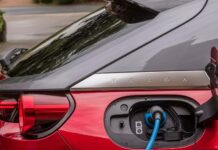[ad_1]
Tire Rack recently compared the standard Continental and Michelin tires that a Tesla Model 3 Long Rance comes with from the factory to aftermarket alternatives from the same manufacturers. The test was performed in order to be able to gauge the differences and provide recommendations to Model 3 (and EV owners in general) for when the time comes to swap out the factory rubber.
The tires tested were the standard-fit Continental ProContact RX T1, which were measured against the Continental PureContact LS fitted to 19-inch rims. They also compared the manufacturer-equipped Michelin Primacy MXM4 T1 to Michelin CrossClimate2 on 18-inch wheels.
In the case of some high-performance cars that have tires designed specially for them, the OEM tire is usually superior to anything comparable off-the-shelf. However, in this test, for both tire manufacturers and wheel sizes, it was actually the aftermarket tire that had superior properties in most areas tested.
Tire Rack notes that when testing EV-specific tires it puts extra emphasis on several categories that for ICE vehicle aren’t as important. Specifically, it refers to the tires’ effect on vehicle range, as well as the level of road noise they generate.
According to Tire Testing & Information Manager at Tire Rack, TJ Campbell,
We tested Continental and Michelin Grand Touring All-Season tires using two 2022 Tesla Model 3 Dual Motor Long Range vehicles and replacement tires showed significant traction, braking, and lateral grip gains compared to from-the-factory tires.
The 50-0 mph braking distance improvements were substantial, with the replacement tires shortening the wet braking distance by 15 to 23 feet, or one to two car lengths. That can be the difference between a close call and a crash.
The tires were tested on a 6-mile loop that included driving on country roads, an expressway and a state highway. Testing was also carried out at Tire Rack’s own facility, a test track where it can test tires in both dry and wet conditions, as well as drive around 90-degree corners and a slalom course and perform emergency maneuvers.
The test found that while the aftermarket tires had better performance overall, in the case of the Continental, the OEM rubber had lower noise levels and a marginally better ride quality, and it was much the same story with the two Michelin tires tested.
When it comes to the all-important range test with different rubber, Tire Rack predictably found that the replacement tires were nowhere near as good as the ones from the factory. The range king was OE Michelin, which got an estimated range rating of 305 miles, followed by the CrossClimate2 with 271 miles.
For the larger 19-inch wheels, the estimated range on the OE Continental tires was 262 miles, while with the PureContact LS replacement tires that dropped to 246 miles. Keep in mind they didn’t test the vehicle until their battery pack was depleted, but rather calculated the theoretical maximum range based on their reported electricity consumption.
[ad_2]
Source link












